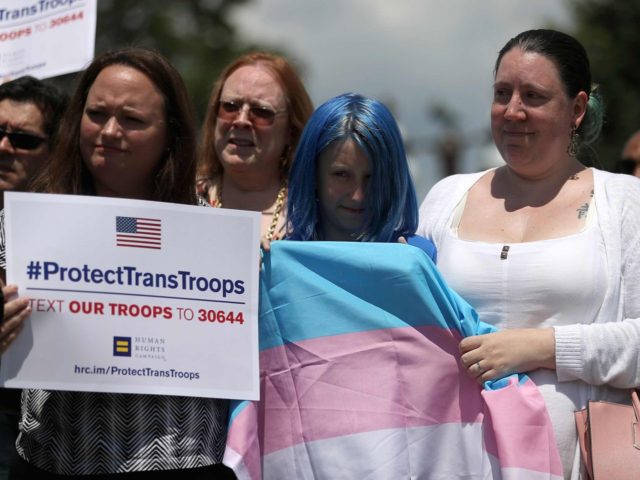Critics of President Donald Trump’s decision to bar transgender Americans from serving in the U.S. armed forces are citing a 2016 RAND Corporation study that, they claim, refutes “the idea that transgender soldiers are somehow expensive, or that they undermine the morale and cohesion of the military over all,” as the New Yorker put it.
The question of cost relates to gender transition treatment, which some transgenders want the military to provide for them.
The RAND study says that the cost of gender transition treatment for transgender service members would be “relatively low” — that is, relative to total military expenditure on health care. But a closer look at the numbers in the study reveals that the health care costs of transgenders who choose to undergo gender transition treatment in the military would be some 14 times higher than the average health care costs of service members in general.
The study estimates that between 29 and 129 transgender service members in the active component of the military would choose to utilize “transition-related health care” annually. The mid-range estimate is 79 individuals per year. Given that the total active component population of the military in 2014 was 1,326,273, that means about 0.006% of service members could use gender transition-related health services. The RAND study estimates that the annual cost of such services would be as low as $2.4 million and as high as $8.4 million, based on different assumptions about the relative prevalence of transgenderism within the military and between men and women. That represents “a 0.04- to 0.13-percent increase in active-component health care expenditures,” RAND concludes. The mid-range estimate for that increase would be 0.085 percent. Therefore 0.006% of service members would be responsible for a 0.085% increase in costs — i.e. a transitioning service member’s medical bills would be 14 times the average.
There are large categories of people who are excluded from military service because of medical conditions — e.g. asthma — that are cheaper and easier to treat than transgender-related health issues (both physical and mental).
As for the question of morale and cohesion, the RAND study is explicit about some of the issues that the military would encounter — such as the need to screen for additional mental health issues, and the problem of recovery from gender-transition surgery. RAND notes that it may not be possible to deploy transgender service members: “Other countries [with transgender service members] have found that, in some cases, it may be necessary to restrict deployment of transitioning individuals to austere environments where their health care needs cannot be met.”
The RAND study noted that other countries had not experienced problems with unit cohesion and transgender service members. “However,” it noted, “we do not have direct survey evidence or other data to directly assess the impact on the U.S. military.” In Australia, Canada, Israel and the United Kingdom, the effects were minimal, but these militaries “had fairly low numbers of openly serving transgender personnel.”
Given significant doubts, it was entirely appropriate for the U.S. military to make its own recommendations, which the president has followed.
Critics of the president’s new policy have compared the transgender ban to the racial segregation of the military. In fact the comparison is useful. Racial segregation was a policy of social engineering championed by so-called “progressive” Democrats like President Woodrow Wilson. It made our military less effective. Today’s push for transgender soldiers is another, largely Democratic, effort to use the military to achieve social outcomes unrelated to the primary purpose of the military, i.e. defending the country and defeating its enemies.
The White House Press Corps questioned Press Secretary Sarah Huckabee Sanders about how Trump’s new policy squared with his promise during the campaign to “fight” for LGBT Americans. In fact, the new policy fulfills that promise because it is based on what the military says it must do to defend the country. No one has the “right” to serve in the military, but the military has the obligation to protect the country and the freedom of all within it.

COMMENTS
Please let us know if you're having issues with commenting.